Introduction to the characteristics of washing, sun-drying or wet-planing coffee commonly used in Mantenin, Indonesia
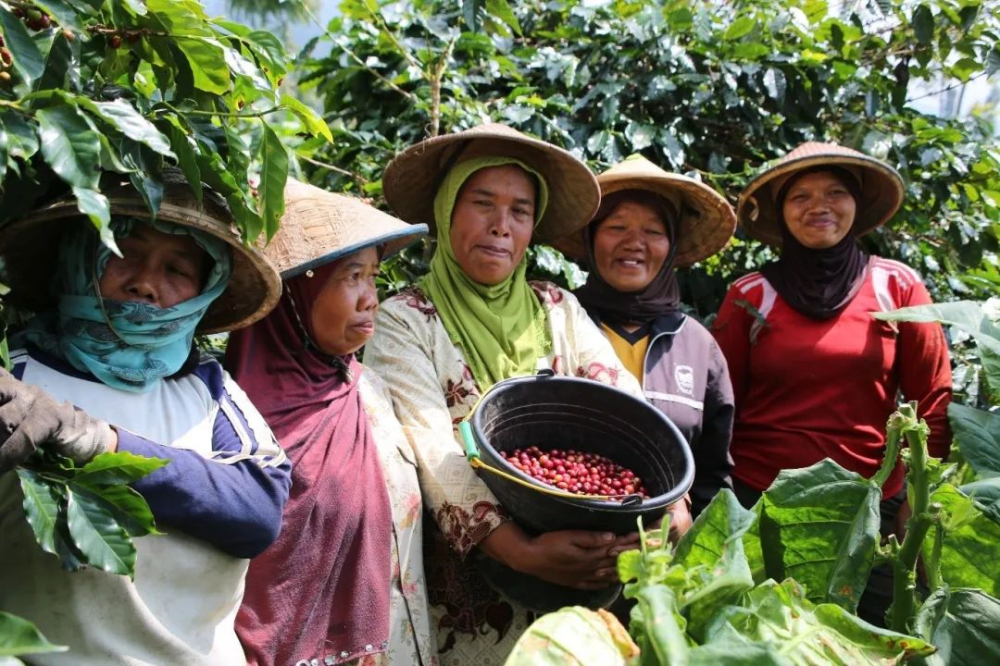
The biggest difference between Indonesia and many other coffee producing areas is that the weather is humid, the humidity in Indonesia is between 7090% and 90% all the year round, and the annual rainfall is even more than 2000mm in the coming typhoon. Such bad weather simply cannot be dried in the sun for as long as 2 to 3 weeks as in Africa, and water washing is not only time-consuming, labor costs and water resources are also more expensive, and Indonesia, which aims at mass production, simply cannot afford it. So summed up a unique semi-washing method-wet planing method.
Different from the traditional sun and water washing, the wet planing method will first peel the coffee fruit with a peeling machine and pour it directly into the pool for a few hours to ferment. At this time, a small amount of pectin will remain on the bean shell, which will be removed by brushing. Then the shell beans are dried, and when the raw beans reach 30% water content for the first time, the coffee farmers will sell the raw beans to the purchaser. The purchaser will shell the semi-dried shell beans directly, speed up the drying, and remove pectin and shell to get raw beans.
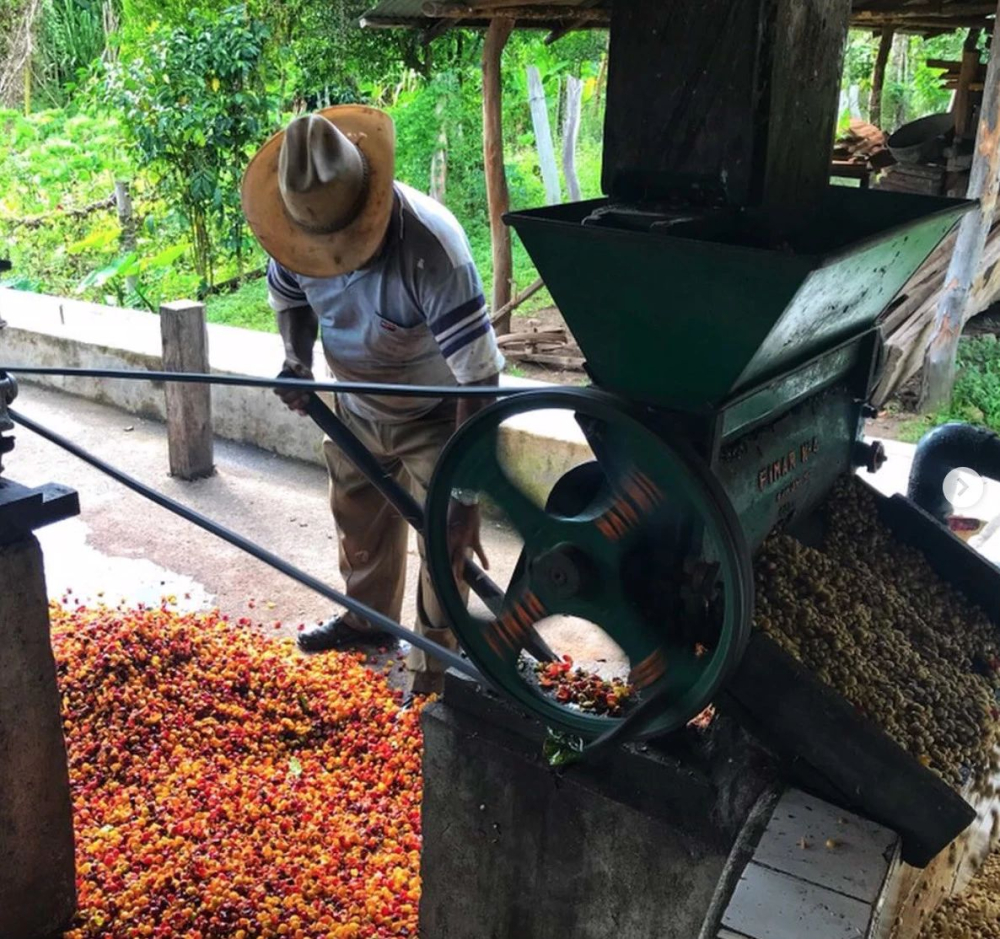
Because the shelling machine uses greater friction, the parchment layer clinging to the raw beans is torn open. At this stage, white or green mucus usually flows out of it. Due to long-term mucus soaking and humid conditions, the raw beans finally become soft, whitish and swollen, and form grayish green. After friction stirring, raw beans are also more likely to be crushed or crushed, especially at both ends, forming a small gap, resulting in sheep's hoof beans. The drying speed of "naked beans" without sheep skin is very fast, and at the same time, it is also directly exposed to the humid environment, which is bred by various bacteria.
Obviously, wet planing shortens the fermentation period of coffee beans, decreases acidity, increases alcohol thickness, and increases the smell of vegetation and herbs. "naked beans" still absorb moisture from hot and humid air, forming the "smelly" smell of soil, herbs and cedar wood unique to Sumatra. After baking, it has a strong burnt flavor of dark chocolate, caramel and nuts, which is deeply loved by the Japanese who love deep-roasted coffee. The two types of Mantenin coffee beans on the front street bean list are treated with wet planing. If you are also curious about the flavor of the above Southeast Asian coffee, you might as well try the wet planing Indonesia Mantenin rations bean coffee launched in Qianjie.
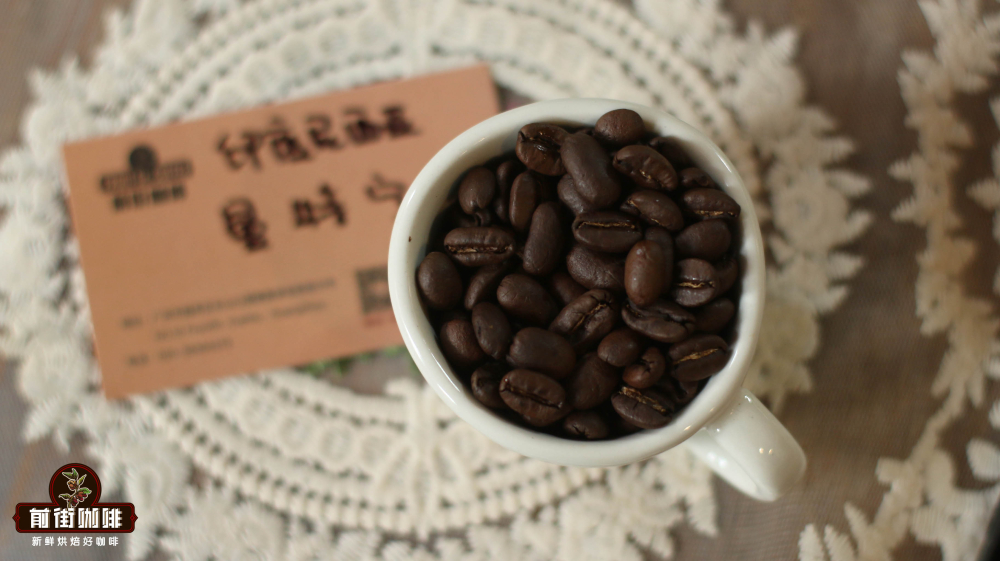
For full-bodied coffee such as Indonesia Manning Coffee, Brazilian Queen Manor Coffee and Jamaican Blue Mountain Coffee, Qianjie baristas will prefer KONO filter cup to brew. KONO filter cup has a smooth surface compared with v60, this design is actually to ensure that the filter cup is wet and close to the wall of the filter cup, while there are only 1/4 high diversion ribs of the filter cup, which limits the air flow up, and the water can only be left to the lower pot through the bottom. This increases the water absorption time of coffee powder particles, so that the coffee powder layer and hot water form immersion extraction, the taste of coffee is more round, mellow and concentrated.
The medium-deep roasted coffee beans change the internal structure of the beans to a great extent, become loose, and the coffee powder is more absorbent. If the brewing parameters are not adjusted properly, the coffee will be more bitter than the extract. If you want coffee to have enough aroma but not extract, it is necessary to reduce the extraction rate. Qianjie will use low water temperature and coarse sugar grinding degree to reduce the release of bitter macromolecules in coffee.
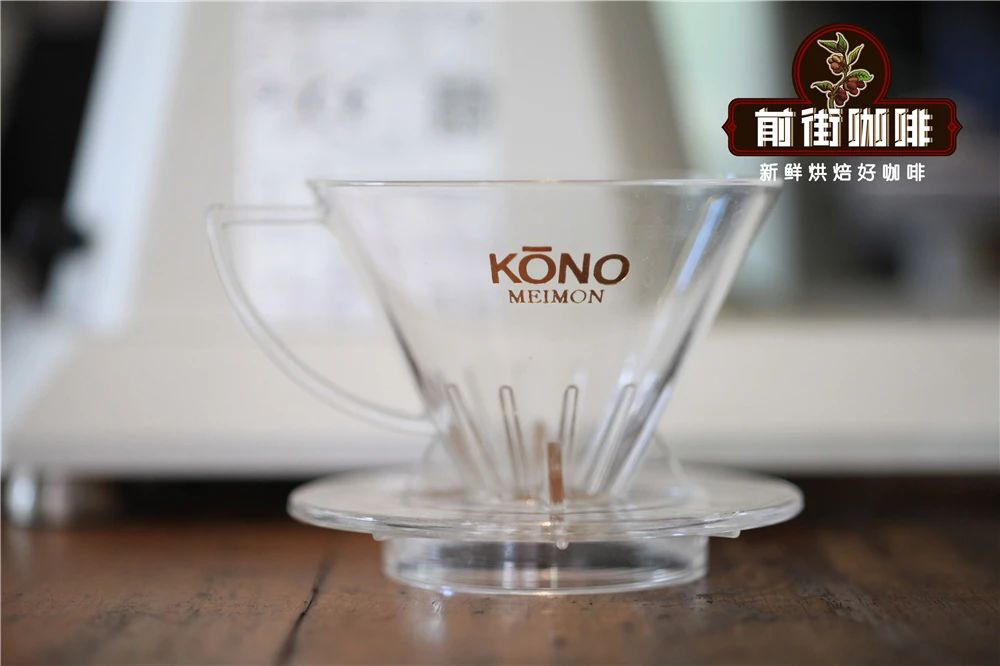
Deep roasting loosens the internal structure of coffee beans, and we can crush them with a gentle pinch of our hands, which shows that the coffee beans are highly absorbent after grinding into powder. In order to prevent coffee powder from releasing too much bitterness after absorbing water, Qianjie will thicken the grinding degree and flush it by hand with cooler water. The degree of grinding is one of the key factors affecting the taste of coffee. After grinding into powder, coffee beans come into contact with hot water and release a large number of flavor substances soluble in water. A tool is used to adjust the grinding degree in the front street-China 20 0.85mm standard sieve. The screening rate of medium and shallow roasted coffee beans in front street is always 75%, while that of medium and deep roasted coffee beans is 70%. Compared with light roasted coffee, medium and deep roasted Mantenin beans have a looser internal structure, so they have better water absorption and are easy to release macromolecular bitter substances. In order to avoid excessive extraction, Qianjie chooses a thickness of 70% of the pass rate of the No. 20 standard screen.
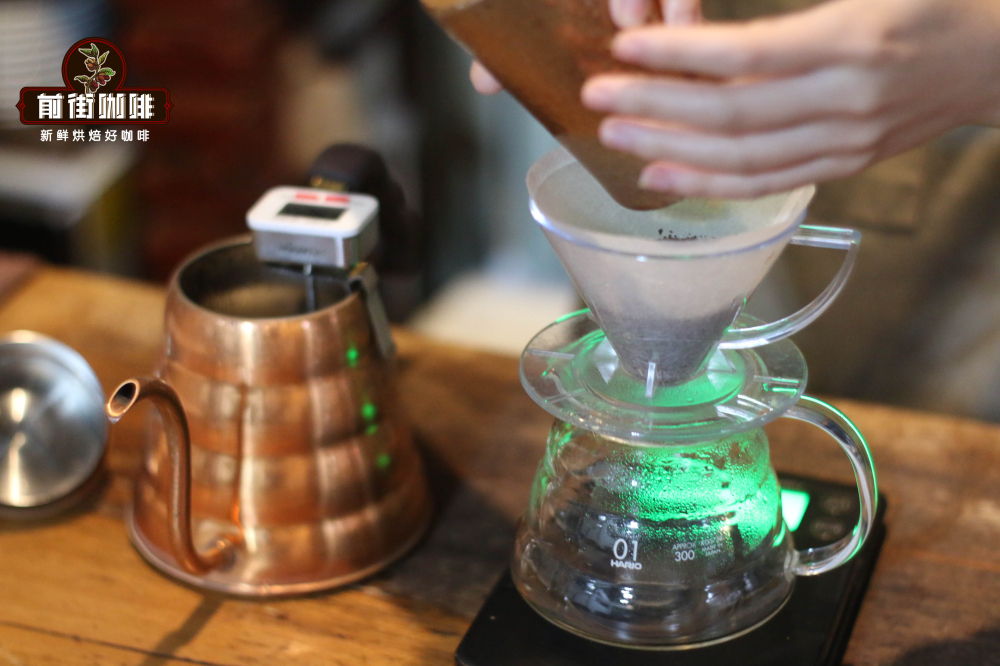
Water temperature and grinding degree play a similar role. The higher the water temperature, the higher the extraction efficiency of coffee, the easier it is to release various substances, and the higher the concentration is. If you use hot water that is close to boiling, it is easy to extract unpleasant bitter substances, so if you deep-bake coffee beans, Qianjie will use different cooking parameters from light-roasted coffee beans. There are more caramelization reactions than lightly roasted coffee beans, so it is easier to release bitter macromolecules. In order to avoid excessive extraction of miscellaneous flavor, Qianjie will lower the water temperature a little bit. The brewing temperature of light roasted coffee is 91-93 ℃, and 87-88 ℃ is recommended in the front street of medium and deep roasted coffee beans.
Recommended cooking water temperature: 87-88 degrees
Coffee powder: 15g
The ratio of powder to water is 1:15
Degree of grinding: medium and coarse grinding (Chinese standard No. 20 screen pass rate 70%)
The brewing method uses three-stage water injection, which is divided into three stages to better show the mellow taste of golden Manning coffee and the sweetness of caramel.
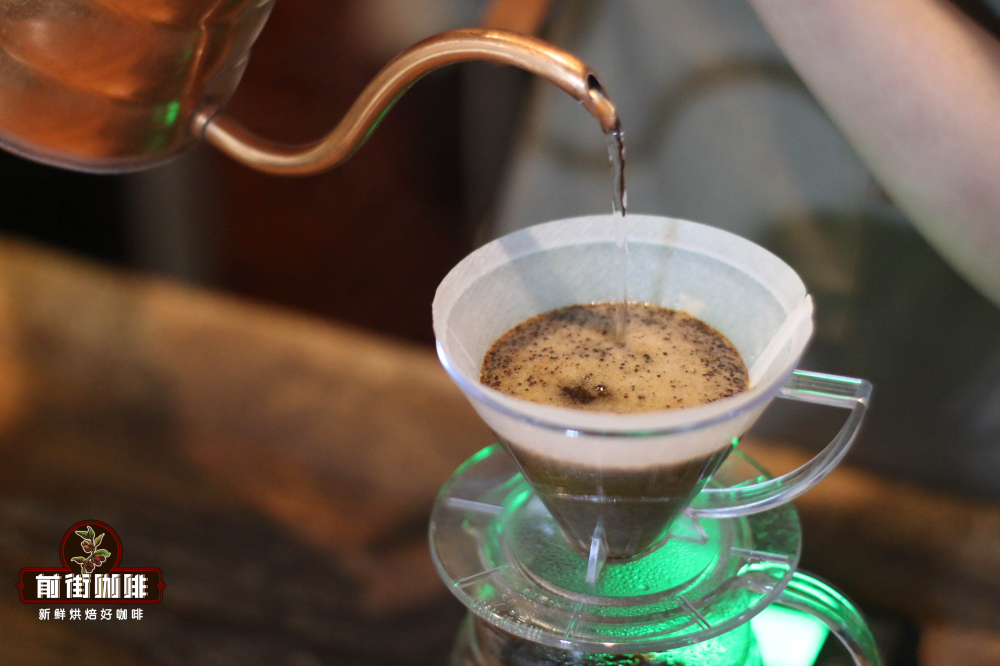
The first stage of steaming water injection 30ml, this stage of water injection all wet coffee powder, exhaust, in order to better extract the flavor substances of coffee. The second section is injected with 100ml, which mainly flushes out Mantenin's golden foam and raises the powder layer.
In the last section, 95ml is injected into the soft center, which can improve the sweetness of the coffee, showing a thick and mellow taste, the sweetness of caramel and the flavor of chocolate and nuts.
Professional coffee knowledge exchange more coffee bean information please follow the coffee workshop (Wechat official account cafe_style)
For more boutique coffee beans, please add private Qianjie coffee on Wechat. WeChat account: qjcoffeex
Important Notice :
前街咖啡 FrontStreet Coffee has moved to new addredd:
FrontStreet Coffee Address: 315,Donghua East Road,GuangZhou
Tel:020 38364473
- Prev
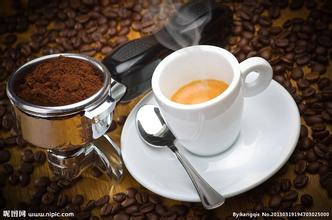
Introduction to the production of uniform and glossy Honduran Coffee
Speaking of Honduran coffee, many people may feel very strange. Is there coffee in Honduras? In my impression, this is one of the most restless countries in China and the United States, and the current political situation is still very unstable. The only thing that can be connected with it is the world-famous diving resort of Honduras Blue Cave. Coffee? Will there be coffee production in such a chaotic country? But, indeed, Honduras
- Next
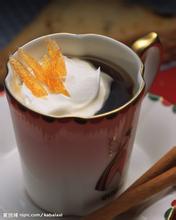
The handling of Kenyan Coffee introduces Berman Manor in the Central Mountain area of Nyeri
Kenya is bordered to the north by Ethiopia, the origin of Arabica coffee trees, but it was not until the beginning of the 20th century that coffee cultivation began. In the 19th century, missionaries introduced Arabica trees from Yemen, but did not plant them in large quantities until 1893. Brazil's ancient bourbon coffee seeds were introduced to cultivate coffee on a large scale. In other words, the current Kenyan coffee is of Brazilian origin.
Related
- Does Rose Summer choose Blue, Green or Red? Detailed explanation of Rose Summer Coffee plots and Classification in Panamanian Jade Manor
- What is the difference between the origin, producing area, processing plant, cooperative and manor of coffee beans?
- How fine does the espresso powder fit? how to grind the espresso?
- Sca coffee roasting degree color card coffee roasting degree 8 roasting color values what do you mean?
- The practice of lattes: how to make lattes at home
- Introduction to Indonesian Fine Coffee beans-- Java Coffee producing area of Indonesian Arabica Coffee
- How much will the flavor of light and medium roasted rose summer be expressed? What baking level is rose summer suitable for?
- Introduction to the characteristics of washing, sun-drying or wet-planing coffee commonly used in Mantenin, Indonesia
- Price characteristics of Arabica Coffee Bean Starbucks introduction to Manning Coffee Bean Taste producing area Variety Manor
- What is the authentic Yega flavor? What are the flavor characteristics of the really excellent Yejasuffi coffee beans?

